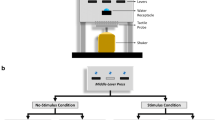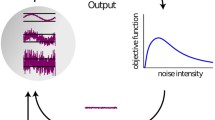Abstract.
A recent analysis of the energy detector model in sensory psychophysics concluded that stochastic resonance does not occur in a measure of signal detectability (d′), but can occur in a percent-correct measure of performance as an epiphenomenon of nonoptimal criterion placement [Tougaard (2000) Biol Cybern 83: 471–480]. When generalized to signal detection in sensory systems in general, this conclusion is a serious challenge to the idea that stochastic resonance could play a significant role in sensory processing in humans and other animals. It also seems to be inconsistent with recent demonstrations of stochastic resonance in sensory systems of both nonhuman animals and humans using measures of system performance such as signal-to-noise ratio of power spectral densities and percent-correct detections in a two-interval forced-choice paradigm, both closely related to d′. In this paper we address this apparent dilemma by discussing several models of how stochastic resonance can arise in signal detection systems, including especially those that implement a “soft threshold” at the input transform stage. One example involves redefining d′ for energy increments in terms of parameters of the spike-count distribution of FitzHugh–Nagumo neurons. Another involves a Poisson spike generator that receives an exponentially transformed noisy periodic signal. In this case it can be shown that the signal-to-noise ratio of the power spectral density at the signal frequency, which exhibits stochastic resonance, is proportional to d′. Finally, a variant of d′ is shown to exhibit stochastic resonance when calculated directly from the distributions of power spectral densities at the signal frequency resulting from transformation of noise alone and a noisy signal by a sufficiently steep nonlinear response function. All of these examples, and others from the literature, imply that stochastic resonance is more than an epiphenomenon, although significant limitations to the extent to which adding noise can aid detection do exist.
Similar content being viewed by others
Author information
Authors and Affiliations
Additional information
Received: 22 January 2001 / Accepted in revised form: 8 March 2002
Rights and permissions
About this article
Cite this article
Ward, L., Neiman, A. & Moss, F. Stochastic resonance in psychophysics and in animal behavior. Biol Cybern 87, 91–101 (2002). https://doi.org/10.1007/s00422-002-0328-z
Issue Date:
DOI: https://doi.org/10.1007/s00422-002-0328-z




